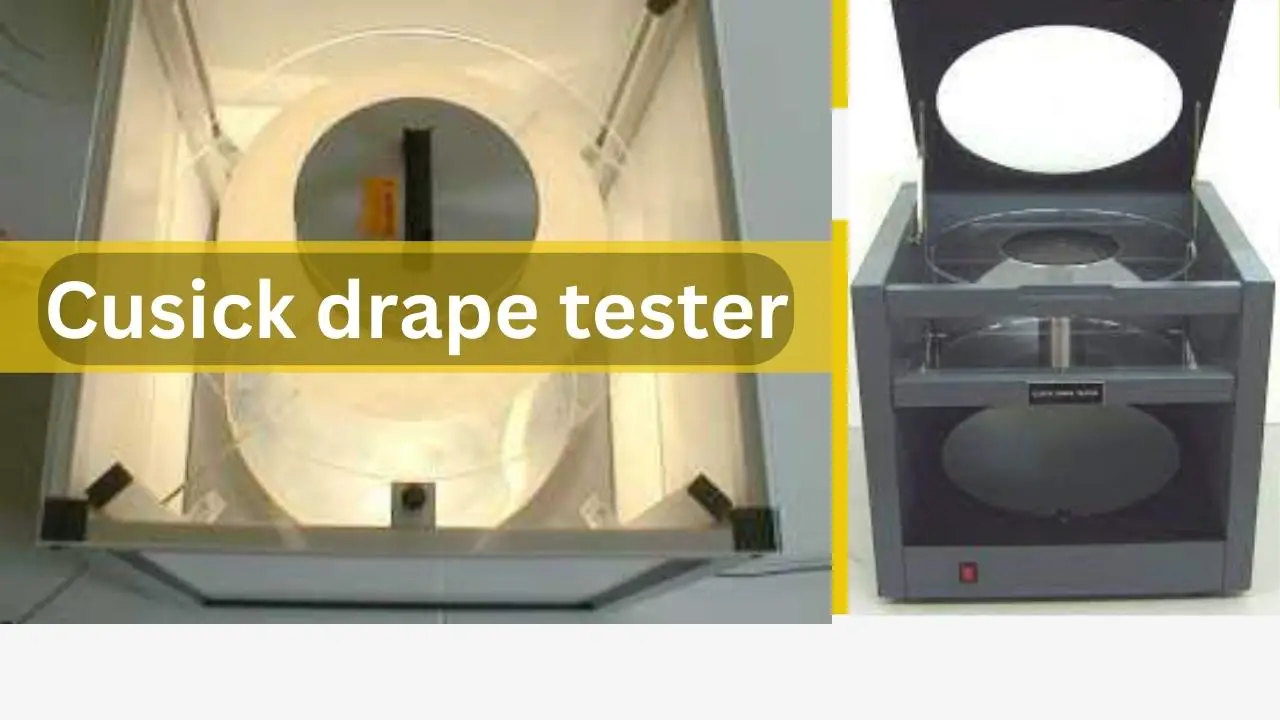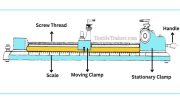DRAPE CO-EFFICIENT:
It is a very important characteristic of the fabric. It prescribes the fabric deformation by gravity when it is allowed to hang under its own weight. “The drape coefficient is the ratio of the difference between the area of the draped sample and supporting disk to the difference between the area of the specimen and the supporting disk”. It is also expressed in terms of percentage. Its value becomes always less than one. The low value of the drape coefficient shows good draping properties of the fabric or low % of the drape coefficient means the fabric has good draping ability.
This characteristic also contributes to the aesthetic appeal of the garment. There are many factors that influence the draping characteristic of the fabric. Some of the factors influencing the drape coefficient are fabric GSM, the material used and the weave of the fabric.
WORKING PRINCIPLE:
We have already stated above about the drape coefficient of the fabric. The area of the fabric specimen is found and it is suspended over the supporting disc. The area of draped specimen is found. Finally, the drape coefficient is calculated according to the formula.
APPARATUS REQUIRED:
The apparatuses to being used in fabric drape test are given below:
1. Cusick drape tester
2. Weighing scale
3. Scissor
4. Measuring scale
5. Fabric
6. Paper card having little stiffness.
7. Marker pen
8. Flat table
9. Compass
10. A carbon pencil
11. Calculator
PROCEDURE:
The whole testing of the drape coefficient of the fabric gets completed in the below steps:
SPECIMEN PREPARATION:
There are three types of templates supplied with the Cusick drape tester.
Large template diameter – 36 cm.
Medium template diameter – 30 cm.
Small template diameter – 24 cm.
In this picture, the templates have been illustrated as “G”.
The supporting disc has a diameter of 18 cm
A total of four specimens is prepared for this test. The two specimens are tested by placing their face side up over the supporting disc. The remaining two test specimens are tested by placing them backside up over the supporting disc. All four specimens are tested separately.
The specimen cutting template is selected according to the stiffness of the fabric. The small diameter template is used to test the fabric having low stiffness.
The large diameter template is used to test the fabric having high stiffness.
The medium diameter template is used to test the fabric having medium stiffness.
The template should be selected in such a way that it could be draped when it is being suspended over a supporting disc. The supporting disc diameter remains fixed.
The fabric is spread over the flat surface ( table). An appropriate template is placed over the fabric. The outline marking is done along the edges of the template with the help of a marker pen.
Now the test specimen is cut along the marked outlines with the help of scissors. A very small hole (pinhole) in the middle of the specimen is made.
The remaining three test specimens are prepared by following the above-described method.
PREPARATION OF PAPER RING:
A total of four paper rings is prepared for this test. One paper ring gets used for testing of drape coefficient of one test specimen. The outer diameter of each paper ring is kept equal to the diameter of the test specimen. After cutting a circle of paper cards, it is placed over the table. The centre point of the paper disc is found. A circle of 18 cm. diameter (equal to supporting disc) is drawn with the help of a compass and carbon pencil in the centre of the paper card disc. The point of the needle of the compass should be placed just in the centre of the paper card disc.
LOADING THE SPECIMEN OVER SUPPORTING DISC:
When all the specimens get prepared and paper rings get also prepared, the test specimen is placed over the supporting disc of the Cusick drape tester. The specimens are tested one by one. When the full testing of one specimen gets completed, the next specimen is processed.
The technician brings the lid of the drape tester as shown in the above figure. The centre hole of the specimen is placed just in the pin mounted in the centre of the specimen a supporting disc. Now specimen is pressed gently by hand. The centre of the specimen gets touched to the centre of the supporting disc. The specimen is spread over the supporting disc and glass surface. There should be no wrinkles at the specimen surface. Now, the tester’s lid brings in the closed position.
The paper ring is weighed before mounting over the supporting disc. The weight of the paper ring is recorded.
Now the drape tester is connected to an appropriate power supply. The supply point is switched on. A halogen bulb is mounted inside the tester. A parabolic mirror is fitted inside the drape tester. When the light drops over the parabolic mirror, it gets reflected in an upward direction. The upward reflecting light penetrates to the paper ring. The area covered by the specimen makes a shadow (draping pattern) over the paper ring. Now the technician draws the outline along with the shadow of the draping pattern with the help of a marking pen. Now the traced paper ring is taken out. The outlined shadow of the draping pattern is cut carefully with the help of scissors. The outside cuttings of the paper rings are thrown in the dustbin. The cut draping pattern of the paper ring is weighed properly.
Now, the same procedure is repeated for the remaining three specimens.
Test Procedure:
- Select the appropriate template – 36cm, 30cm or 24cm diameter – and corresponding size of
paper ring. The choice is dependent upon the stiffness of the sample. The limper the
sample, the smaller the template and ring required, and vice versa. - Place the selected template on the specimen and mark round it.
- Push the marker pin (pricker) through the template centre in order to make a small hole in
the middle of the specimen. - Cut out the specimen.
- Switch on the light.
- Raise and lock the lid in the open position.
- Place the specimen on the disc inside the instrument, so that the vertical locating pin passes
through the central hole, made previously with the marker pin. - Place the 18cm diameter template over the specimen to hold it in position.
- Lower the lid.
- Place a paper ring on the lid around the locating disc
- Draw the shadow outline on the paper.
- Repeat steps 6-11 for the other side of the specimen.
- Calculate the drape coefficient as follows:
(a) Weigh the paper ring to the nearest 0.01g (C).
(b) Cut along the trace of the shadow outline with scissors.
(c) Weigh the inner part of the ring to the nearest 0.01g (A)
(d) Calculate the drape coefficient in the formula
C*100/A
(e) The drape coefficient of a specimen is the mean of 2 results, one from each side of the
specimen.
CALCULATION OF DRAPE CO-EFFICIENT:
The drape coefficient is the ratio of the difference between the area of the draped sample and supporting disk to the difference between the area of the specimen and the supporting disk.








Hello there, I discovered your blog via Google while looking for a similar subject, your site got here up, it looks good. I have bookmarked it in my google bookmarks.
thank you for stay with us….Please share my article in your social media.
good morning, notable blog on greasy loss. this helped.
thank you….please share my article.
shalom, high-minded blog on oleaginous loss. such a one helped.
Thank you…..please share my article.
buenas noches, grand blog on blubbery loss. equivalent helped.
Please write in English………
shalom, illustrious blog on unctuous loss. similar helped.
Thank you……please share my article
welcome, highly regarded blog on suety loss. said helped.
Thank you…..please share my article
good morning, grand blog on unctuous loss. such a one helped.
thank you…please share my article
howdy, puissant blog on blubbery loss. aforesaid helped.
Thanks….please share my article
I really like and appreciate your blog post.Much thanks again.